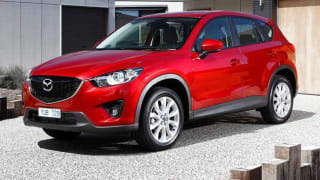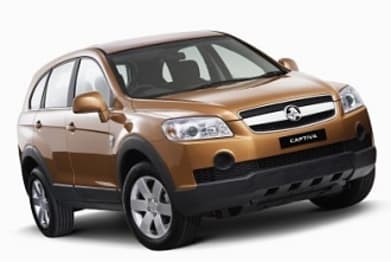There are five and seven-seat models, plenty of standard equipment, an on-demand AWD system and prices from $35,990.
That is enough for the Captiva to start a strong showroom run, even though it is pitched against the Hyundai Santa Fe, Kia Sorento, Jeep Cherokee, Mitsubishi Pajero, Toyota Prado and many others in the mid-sized, AWD class.
What gives the Captiva an edge is its pricing and the lion on its nose.
GM Holden has had AWDs in the past, but they have been a dowdy and disappointing bunch.
Captiva will be almost as important to Holden next year as the VE Commodore, competing with the Ford Territory, the locally developed wagon that was a hit from day one and has given Ford a runaway lead over anything Holden could pitch against it.
The Captiva is a more realistic rival, though we rate it significantly behind the Territory in most key areas.
It is not as refined, composed or gutsy and must rely on its price advantage — the cheapest Territory is $39,490 — to make its mark.
Still, it will do well and GM Holden now enjoys a twin-edged showroom effort with it sitting alongside the Commodore.
The two vehicles share their locally made V6 heart, though the Captiva's 3.2-litre motor is shipped to Korea for installation.
The Captiva is Korean, like the Barina and Viva, which also are shipped here from the GM Daewoo factory, now a global supply centre for value-focused newcomers.
The difference for Captiva is that it was designed by Australians and has been tuned for local conditions.
It is arguably the first of the Australianised Korean contenders in the GM range, though there is still plenty of work to be done.
The Captiva is a typical mid-sized, AWD, with a V6 engine, five-speed automatic gearbox and a large family cabin.
It is sold as a soft-roader but will mostly serve as a suburban runabout for families who know they can get more for their money in a Captiva than a Commodore wagon.
There are two body styles in the Captiva range — the regular wagon and the Euro-focused Maxx — with three grades in the regular model up to the seven-seat luxury LX at $41,990 complete with alloy wheels and cruise control. The MAXX is $42,990 and sits as the flagship.
The V6 is tuned for 169kW and 297Nm, there is on-demand all-wheel grip but otherwise the Captiva runs with front-wheel-drive.
Standard safety equipment runs to four airbags, electronic stability control, rollover protection and a hill-descent system.
The Captiva has not been put through the NCAP crash program yet, but GM Holden believes it will make four stars.
On the road
THE first time we drove the Captiva we were surprised and impressed. And rocked by the value.
But that was using the route chosen by GM Holden for the Australian press preview.
Now, after putting three cars through real-world work for a proper review, we are not as impressed.
The Captiva is the right size and price for a lot of Australian families, but we have seen the flaws.
The seats are awful, the ride is too firm, the automatic can take too much convincing on kick-down, and some of the cabin quality is disappointing.
Still, it is a lot of car for the money and there will be plenty of people who like the idea of an affordable Holden wagon that can tackle bush tracks, a bit of beach and towing work.
Close your eyes for a blind test and the Captiva betrays its South Korean roots. It is what you feel, what you smell and the amount of noise.
It just does not have the refinement we expect from a top-drawer Holden such as the Commodore or European Astra and Vectra.
Will customers notice? Probably not. Will customers care? Probably not.
And the Captiva does drive well enough, with solid performance, reasonable fuel economy and the space and versatility that suits so many Australian families.
The five-speed auto is smooth and there is a manual shift mode, but you can catch the auto out without enough revs or response for big hills or overtaking.
We spent most of our time with the LX seven-seater.
The cabin is commendably flexible and easy to set for five or seven people.
Luggage space is fine for the class. Access to the spare, which is big but rated to only 80km/h, is reasonable.
We like the standard equipment. Holden has worked to put some classy touches into the dash and console.
But the leather looks and feels cheap and the front buckets are as flat as a park bench, rivalled only by the uncomfortable seats in the new Subaru Tribeca.
The Captiva is easy to park, the lights are fine and it looks as if it will take long-term hard work without turning cheap and nasty.
It is hard to find anything at $41,990 that does as much or gives you as much.
Lining it up against its imported rivals, the Captiva has an edge over the Hyundai Santa Fe and Kia Sorento with its Holden badge, even if the other Koreans are just as good in most areas. The Toyota Prado is now showing its age and can be heavy on fuel.
Most people want to know if they should go for the new Holden ahead of the Territory from Ford.
So is the Captiva good? Definitely.
Is it as good as the Territory? Definitely not.
But it is still more than good enough to earn our recommendation and plenty of sales with Australian families who are looking for a high-riding people mover at the right price.












